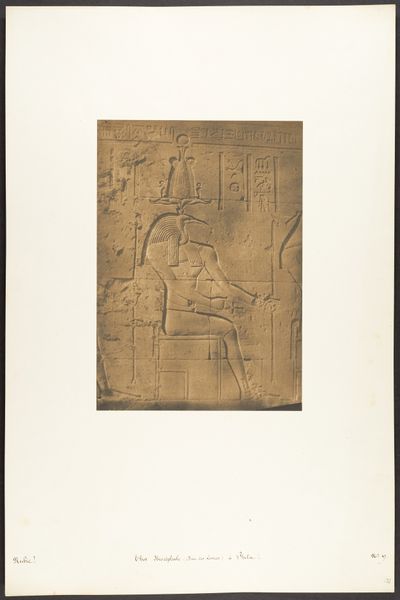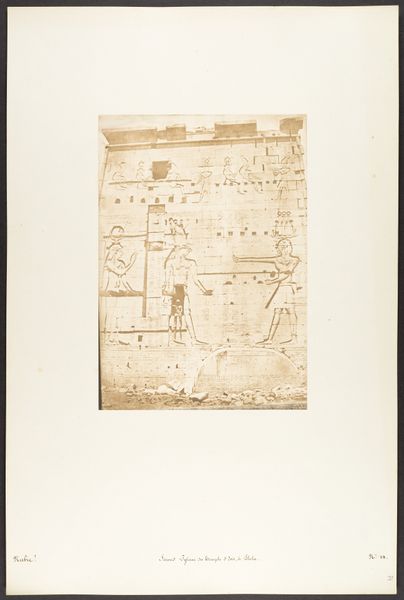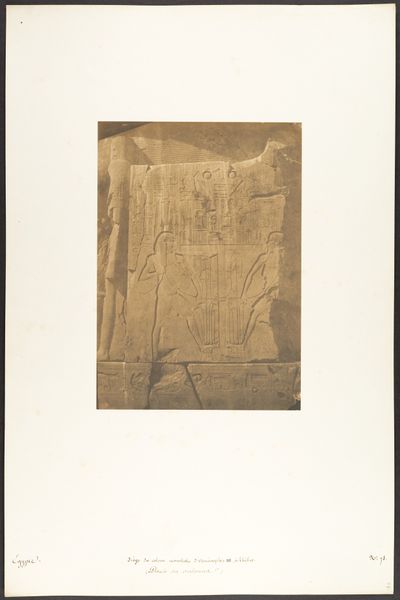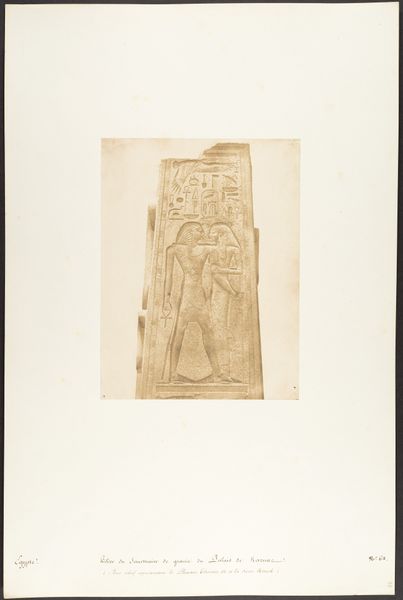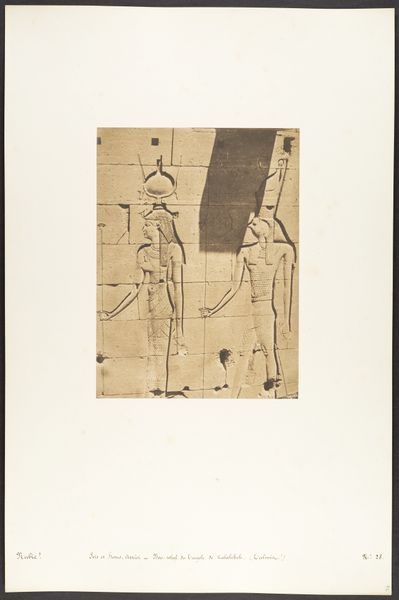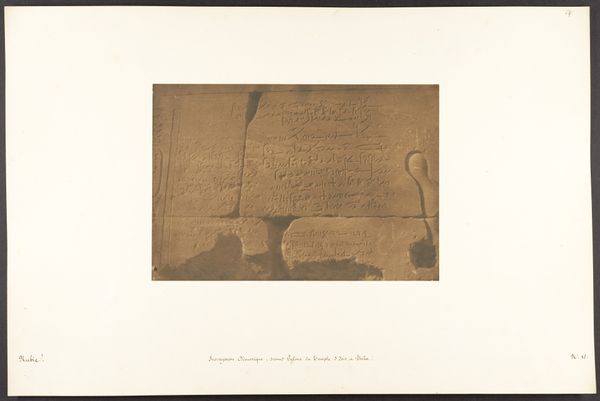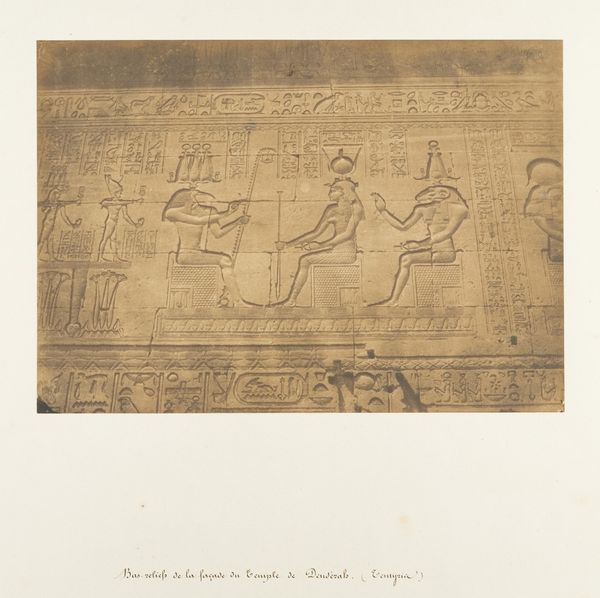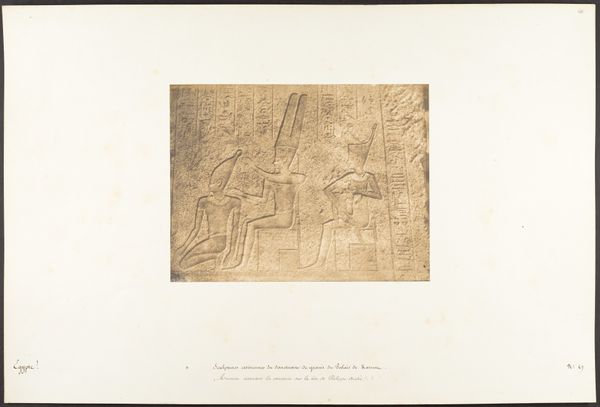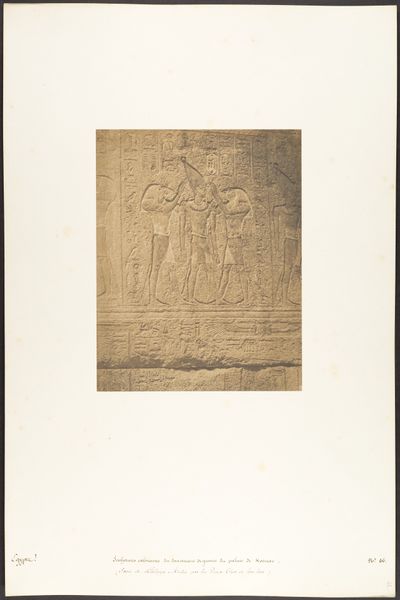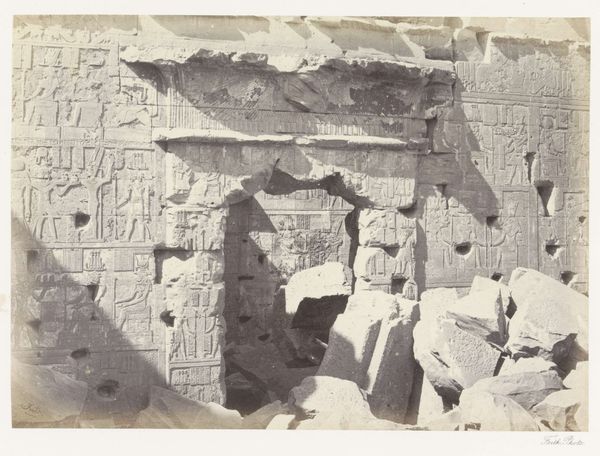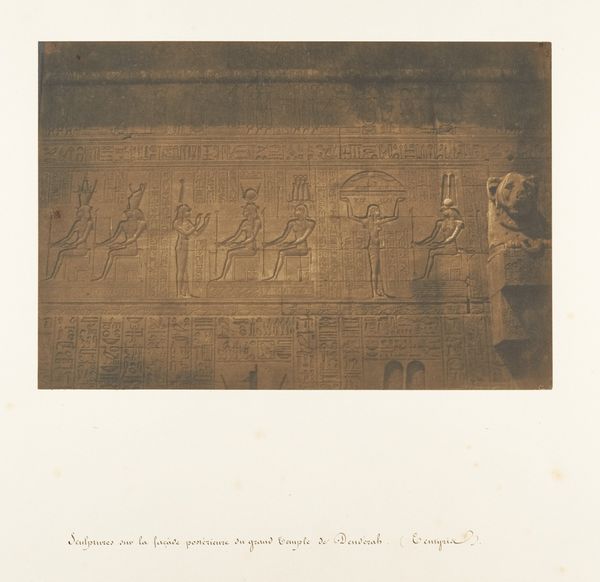
Bas-relief pris sur la muraille occidentale du grand Temple d'Isis, à Philae 1850
0:00
0:00
print, relief, daguerreotype, photography
# print
#
relief
#
daguerreotype
#
ancient-egyptian-art
#
photography
#
ancient-mediterranean
Dimensions: Image: 9 1/4 × 7 1/16 in. (23.5 × 17.9 cm) Mount: 12 5/16 × 18 11/16 in. (31.2 × 47.5 cm)
Copyright: Public Domain
Curator: This is "Bas-relief pris sur la muraille occidentale du grand Temple d'Isis, à Philae," a daguerreotype made around 1850 by Maxime Du Camp. Editor: It has such a weathered, dignified presence. The surface texture seems incredibly rich for a photograph, and the monumentality of the temple is clear even in this fragment. Curator: Du Camp's project was a part of a larger nineteenth-century phenomenon of photographic documentation undertaken in the service of European imperial ambitions, in this instance revealing Ancient Egyptian art and architecture. The image gives us insight into the social and political forces that fueled the “rediscovery” and later appropriation of Egyptian culture. Editor: And the materiality! The sheer physicality of the carved stone rendered through the emerging photographic process of the time. Can you talk about how this specific photographic printing method adds to our appreciation of the object’s original creation and purpose? Curator: The daguerreotype, of course, offered a sharp level of detail previously unseen. Think of it as the then state-of-the-art tech, giving Western audiences a seemingly objective window into the past. However, that objectivity is a fiction—consider the selection of the fragment, the angle, and Du Camp's framing, all of which inevitably shape the viewer's perception. Editor: Absolutely. And it speaks to how the emerging medium of photography itself becomes a tool, consciously or unconsciously, for reinforcing certain cultural narratives. It begs the question, who gets to interpret and disseminate these stories? Who benefits from this so-called "rediscovery?" Curator: The photograph circulated widely in Europe, making this relief, this symbol of ancient power and belief, accessible for study and collection. Editor: For me, seeing this photograph now forces consideration of the politics embedded in how we access and interpret historical artifacts and who gets to tell that story. Curator: Agreed, and understanding the forces behind its dissemination can change our appreciation for the original bas-relief and photography’s role.
Comments
No comments
Be the first to comment and join the conversation on the ultimate creative platform.
